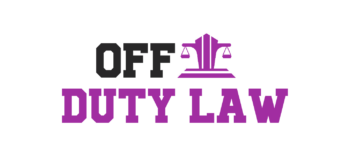Personal injury law is designed to help people who have been hurt due to someone else’s actions. It allows them to seek compensation for their injuries and losses. Understanding the basic principles of personal injury law is crucial for anyone involved in such cases.
Duty of Care and Its Implications
The duty of care is a legal obligation that requires individuals and entities to act in a way that avoids causing harm to others. This duty varies depending on the situation but generally means acting as a reasonable person would. If someone fails to meet this duty, they may be held responsible for any resulting injuries.
Understanding Negligence
Negligence is a key concept in personal injury law. It occurs when someone does not fulfill their duty of care, leading to another person’s injury. To prove negligence, the injured party must show that the other person had a duty of care, breached that duty, and caused the injury as a result.
Causation and Its Role in Claims
Causation is about linking the breach of duty to the injury. There are two types of causation: cause in fact and proximate cause. Cause in fact means the injury would not have happened without the breach. Proximate cause means the injury was a foreseeable result of the breach.
Types of Damages in Personal Injury Cases
In personal injury cases, damages refer to the compensation the injured party seeks. There are several types of damages:
- Medical expenses: Costs for medical treatment related to the injury.
- Lost wages: Income lost due to the inability to work.
- Pain and suffering: Compensation for physical and emotional distress.
- Property damage: Costs to repair or replace damaged property.
Understanding these foundational principles helps in navigating personal injury law and seeking fair compensation.
Common Types of Personal Injury Cases
Personal injury law covers a wide range of incidents where individuals suffer harm due to someone else’s actions or negligence. Here are some of the most common types of personal injury cases:
Motor Vehicle Accidents
Motor vehicle accidents are one of the most frequent causes of personal injury claims. These include car accidents, motorcycle accidents, and truck accidents. Reckless driving, speeding, and not obeying traffic signals often lead to these accidents, resulting in severe physical injuries and significant financial losses.
Medical Malpractice
Medical malpractice cases arise when healthcare providers fail to meet the standard of care expected in their profession, causing harm to the patient. This can include misdiagnosis, surgical errors, or incorrect medication. Victims may face additional medical costs and life-altering conditions as a result.
Workplace Injuries
Workplace injuries occur when employees get hurt while performing their job duties. These can range from minor injuries to severe accidents that require long-term medical care. Employers are often required to provide compensation for these injuries through workers’ compensation insurance.
Product Liability
Product liability cases involve injuries caused by defective or dangerous products. Manufacturers, distributors, and retailers can be held responsible if their product causes harm to a consumer. This can include anything from faulty machinery to contaminated food products.
Legal Theories of Personal Injury Liability
Understanding the legal theories behind personal injury liability is crucial for anyone involved in such cases. These theories help determine who is responsible for the injuries and the extent of their liability. Here are the main legal theories used in personal injury cases:
Negligence and Its Elements
Negligence is the most common basis for personal injury claims. It involves proving that someone acted, or failed to act, in a way that a reasonably careful person would under similar circumstances. To establish negligence, the following elements must be proven:
- Duty of Care: The defendant had a legal duty to act in a certain way toward the plaintiff.
- Breach of Duty: The defendant breached that duty by acting or failing to act.
- Causation: The breach of duty directly caused the plaintiff’s injury.
- Damages: The plaintiff suffered actual harm or loss as a result.
Strict Liability Explained
Strict liability is another legal theory used in personal injury cases, particularly in product liability claims. Under strict liability, the injured party does not need to prove negligence. Instead, they must show that the product was defective and that the defect caused their injury. This theory is often applied in cases involving dangerous animals or abnormally dangerous activities.
Intentional Torts and Their Consequences
Intentional torts occur when someone deliberately causes harm to another person. Common examples include assault, battery, and false imprisonment. Even if the harm was not intended to be as severe as it was, the person who caused it can still be held liable. Intentional torts can lead to both civil and criminal consequences, making them a serious matter in personal injury law.
Navigating the Legal Process in Personal Injury Cases
Navigating the personal injury lawsuit process can seem daunting, but understanding its stages can help you manage expectations and prepare for what’s ahead. Here are the key steps involved:
Filing a Claim
The journey begins with filing a personal injury claim. This step formally notifies the at-fault party of the allegations. It’s essential to act promptly to ensure all legal deadlines are met.
Gathering and Presenting Evidence
Next, a thorough investigation is conducted. This involves collecting medical records, accident reports, and witness statements. The goal is to build a strong case by meticulously gathering crucial evidence.
Negotiating Settlements
Before heading to trial, parties often attempt to negotiate a settlement. This step can save time and resources. Attorneys use the collected evidence to negotiate the best possible settlement for their clients.
Understanding Court Procedures
If a settlement isn’t reached, the case moves to trial. Here, a judge or jury reviews the evidence and decides on liability and damages. This phase is critical as it offers a final opportunity to seek justice and compensation for injuries.
State-Specific Considerations in Personal Injury Law
Statutes of Limitations
Each state has a specific deadline, known as the statute of limitations, for filing a personal injury claim. This period can range from one to six years from the date of the injury. For instance, in New York, the statute of limitations for civil assault and battery cases is one year from the act.
Comparative and Contributory Negligence
States follow different rules when it comes to negligence. Some states use a comparative negligence system, allowing injured parties to recover damages even if they were partly at fault. Other states follow a contributory negligence system, where any fault on the plaintiff’s part can prevent recovery.
State-Specific Liability Laws
Liability laws can vary widely between states. These laws determine who is responsible for an injury and what damages can be claimed. For example, new personal injury laws in California for 2024 include changes to traffic laws that could impact liability in car accident cases.
Maximizing Compensation in Personal Injury Claims
Documenting Injuries and Losses
To boost your personal injury claim’s settlement value, it’s crucial to document all injuries and losses meticulously. This includes keeping detailed records of medical treatments, bills, and any other expenses related to the injury. Photographs of injuries and written accounts of how the injury has impacted daily life can also be valuable.
Calculating Immediate and Long-Term Impacts
Understanding the full extent of your losses involves calculating both immediate and long-term impacts. Immediate impacts include medical bills and lost wages, while long-term impacts might cover ongoing medical care and loss of future earning capacity. Knowing these details helps in negotiating a fair settlement.
The Role of Legal Representation
Hiring a knowledgeable attorney can make a significant difference in the outcome of your case. Attorneys have the expertise to navigate the complexities of personal injury law and can negotiate effectively with insurance companies. They ensure that all potential avenues for recovery are explored, aiming to maximize your compensation. Consulting a reputable attorney can provide the guidance needed to pursue rightful compensation confidently.
Alternative Dispute Resolution in Personal Injury Cases
Mediation vs. Arbitration
When dealing with personal injury cases, alternative dispute resolution (ADR) methods like mediation and arbitration can be very helpful. Mediation involves a neutral third party, called a mediator, who helps both sides come to an agreement. The mediator does not make decisions but guides the discussion. On the other hand, arbitration is more formal. An arbitrator listens to both sides and then makes a decision, which can be binding or non-binding.
Benefits of Alternative Dispute Resolution
ADR offers several benefits:
- Cost-Effective: ADR is usually cheaper than going to court.
- Time-Saving: It often resolves disputes faster than a trial would.
- Confidential: ADR sessions are private, unlike court cases which are public.
- Less Stressful: The process is generally less formal and intimidating than a court trial.
When to Consider Alternative Dispute Resolution
ADR is a good option in many situations, but it may not be suitable for all cases. Consider ADR if:
- Both parties are willing to negotiate and compromise.
- You want to save on legal fees and court costs.
- You prefer a quicker resolution.
- You want to keep the details of the case private.
However, if the case involves complex legal issues or if one party is not willing to participate in good faith, going to court might be the better option.









